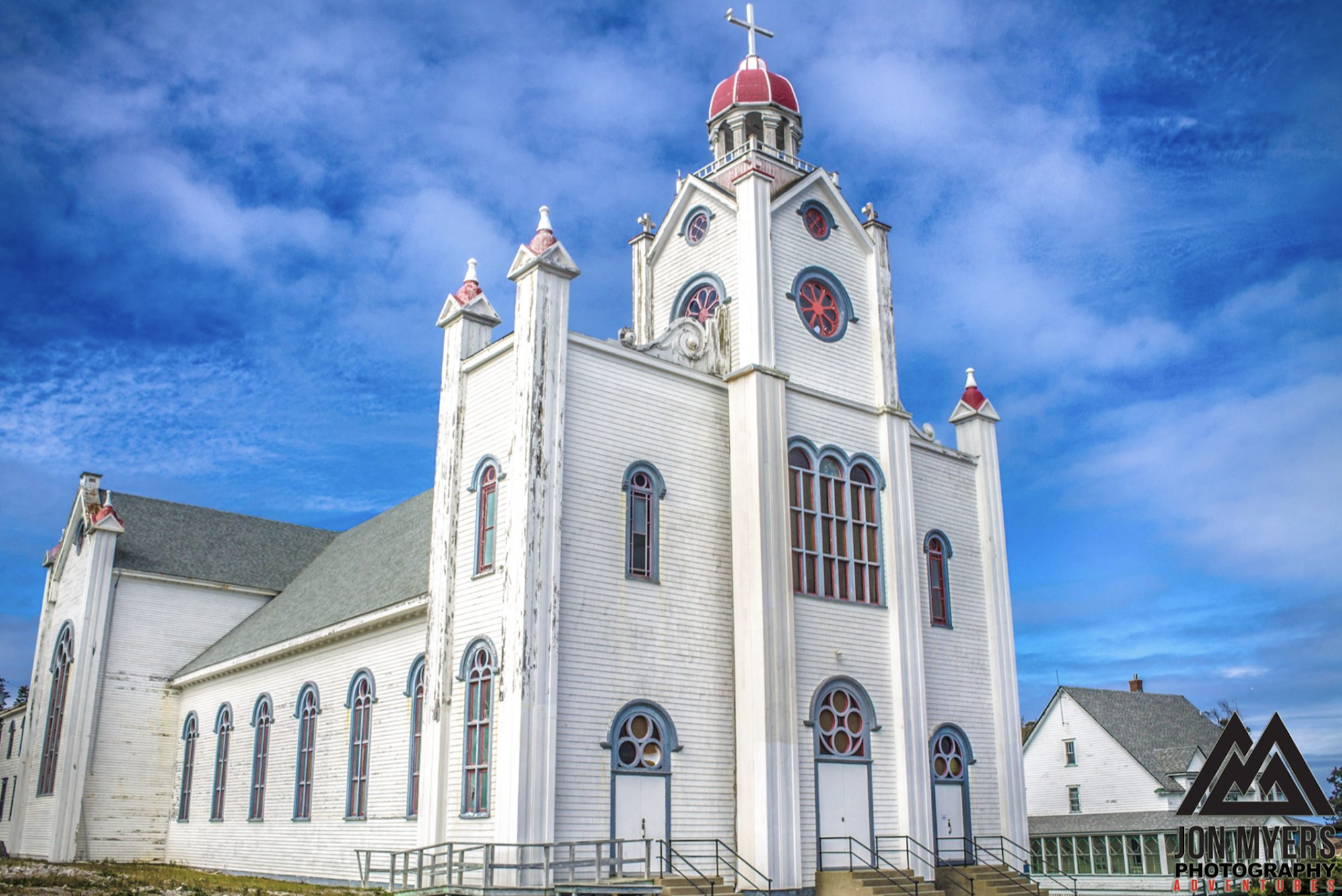Our Lady of Mercy Heritage Church

With a spectacular view of Port au Port Bay and standing 115 feet at it steeple, Our Lady of Mercy Heritage Church is one of the largest wooden structures in Newfoundland and Labrador.
During a visit to visit to the church view local craftsmanship, stained-glass & more. Journey through a century of unexplained phenomenon during a Miracles & Mysteries tour. Tap your toes to local musicians during Music in the Church daily during July & August. Enjoy sweeping views while walking along Danny’s Trail.
Location
Port au Port, NL
WEBSITE
Plan Your Visit
For more information about Our Lady of Mercy Heritage Church, please visit their website or email ourladyofmercycc@gmail.com.
Enjoy FREE admission at this historic place with your National Trust membership.
Become a member today!
 |
The Passport Places network is made possible through valued partnerships with Canadian heritage organizations, site operators and owners.
Look for the following logo at participating historic sites. Partner Organization: Our Lady of Mercy Complex |
Transcript:
At 115 feet in height, Our Lady of Mercy Church of Port au Port West, Newfoundland & Labrador stands tall between the landmasses of Bay St. George and Port au Port Bay.
With a church so large in size and with the beautiful mastery of local craftsmanship and having a seating capacity of 1,000, many question why a church so large would be built for a population so small.
In 1910 a limestone quarry had opened in Jack of Club’s Cove, where the name had soon changed to Aguathuna, a Beothuk name meaning ‘White Rock.’ The change came so business and trade from others afar would be taken more seriously. With increasing employment in the area came 500 men for the job, and with those men came 500 women, which would adorn the hopes of an increasing population. In the early days of Aguathuna, it was believed that due to the expansion of families and promising employment that the area would develop into what would become Newfoundland’s second city outside of the island’s capital of St. John’s. Sadly, the population boom did not occur in later years due to a sudden closure of the quarry operation where the cost of shipping exceeded the means.
With a large religious population, there would be a great requirement for a church to house the population, thus Our Lady of Mercy Church had been developed. It was a dream of Father Joy, the first parish priest in the area. Father Joy had the church designed, and a plan drawn up for a build that would start in 1914 and would take 11 years to complete. The church was consecrated in 1925. In the early years, Father Joy trained in Italy and chose the architecture and structure to reflect churches he had seen
while there.
For such a mighty structure to be built there would be a great deal of capital involved, though Father Joy wanted the structure to be built debt free. In order to do so, he had it built with mainly volunteer labor. Most of the construction was contributed by able bodied fisherman, farmers, miners and adolescents of the parish who each donated at least one week of work per year to the build. There were donations of wood from Nova Scotia and Quebec, and the local communities of Point au Mal, West Bay and Piccadilly.
The beautifully hand carved 14 stations of the cross were brought in by Joy from Italy and are made of Carrera marble, surrounded by travertine marble. Carrera marble was mined under water not far from the town of Carrera where Michelangelo did most of his work. In present day the marble is no longer mined, which makes the stations particularly irreplaceable. As for most of the statues individual families donated them along with the and stained glass structures in memory of their loved ones.
During the build, Mr. Emile Felix, an elderly fisherman from the community who had been too old to climb on the scaffolding of the 35-meter high structure, wished to be of some assistance to the build. With that in mind, Mr. Felix, who could not read, or write took it upon himself to construct the altar rail by hand carving it using only a pocketknife, a homemade plain, an axe and a saw. Today it stands as a testament for what the skilled Newfoundlanders could do at the time with little or no tools.
The design of the church, looking from the sanctuary down, is in the form of a cross. The local craftsmen had built the ceiling of the church in the same way they would have built the hull of a schooner. In essence, the ceiling of the church is built as a boat, but bottom up!
The structure stands as one of Newfoundland and Labrador’s best venues for acoustics. With that being said, the church is no stranger to concerts and plays such as Murder in the Cathedral and International Choirs.
In later years in 1997, the church was named a Registered Heritage Structure by the Heritage Foundation of Newfoundland and Labrador.
Today the doors are open for tours and public services during the summer months. If you would like to visit Our Lady of Mercy Church, feel free to stop by the grounds for a tour and an afternoon you won’t soon forget, nor regret.
